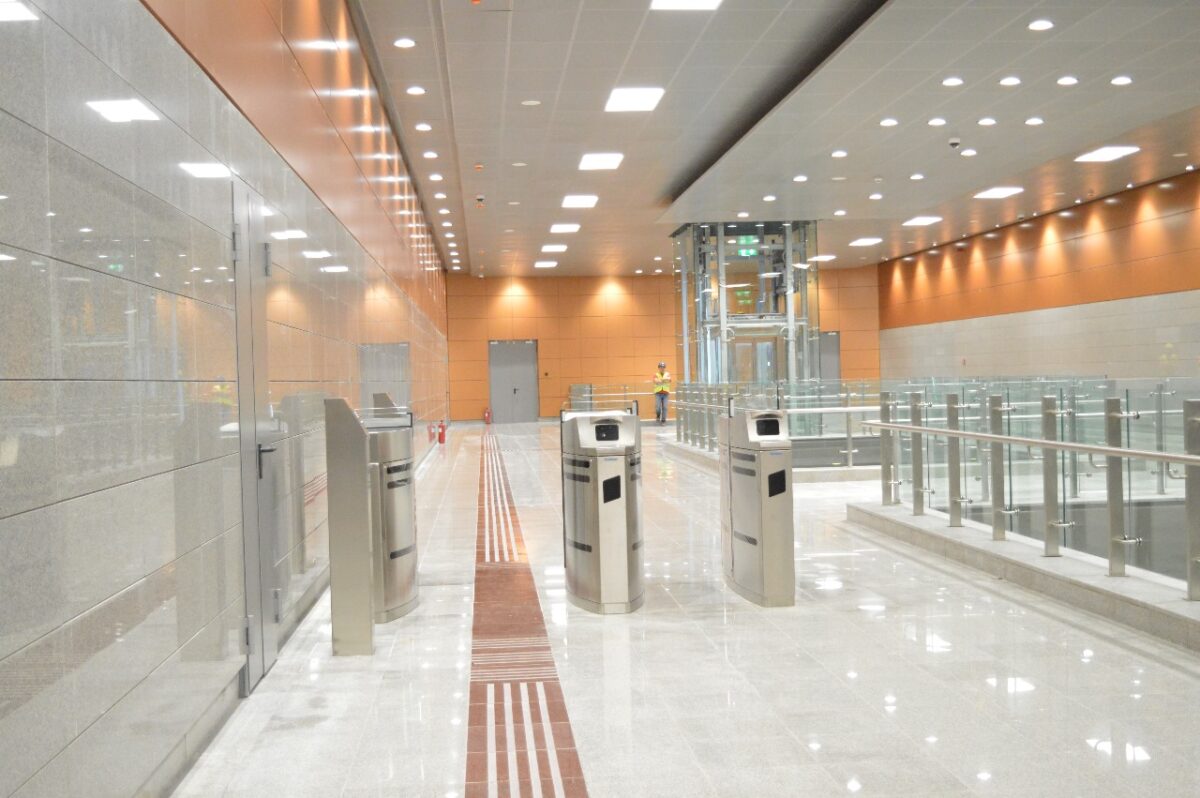We’ve been on a countdown for the Thessaloniki Metro for a while now. There are only four months left until all the necessary final touches are completed, all the “boxes” of pending issues are checked, and the first and main lines in the city become operational.
The Ministry of Infrastructure and Transport leadership has repeatedly committed to delivering the line this coming November. Now, we are on a path that the people of Thessaloniki have been waiting for many years. The main line will operate from the New Railway Station to Nea Elvetia with 13 stations, including the “museum” stations of VENIZELOU and AGIA SOFIA.
What is now starting to attract attention is the planning for the metro operation and how the city’s public transport will be reorganized. A significant development is that Thessaloniki, transitioning from a one-dimensional urban transport system reliant solely on buses, will move to a dual system with buses and the metro.
In this dual system, buses will continue to play a dominant role, while the Metro will require some time for users to incorporate it into their daily routines and for the city to adapt to living with it.
What will change with the operation of the main Metro line
After the 13 stations are expected to become operational this coming November, the extension towards Kalamaria is also in the picture. A recent press briefing by the Ministry of Infrastructure and Transport announced that the delivery of the additional five stations will take place in the second half of 2025.
There are some exciting developments regarding the impending operation. The first is that THEMA, the company operating the Thessaloniki Metro, mentioned through social media that with the start of the main line’s operation, the trains will run every 2.5 minutes during peak hours. With the addition of the extension towards Kalamaria, the trains can run every 90 seconds.
This is because the initial system will be in full operation, with two lines sharing the first 11 stations and then branching off at the 25th Martiou station towards Nea Elvetia and Mikra. Additionally, we currently have 18 trains available, and the procurement of an additional 15 trains is underway. In total, the system will operate with 33 stations.
The operation of the Metro will also trigger a ripple effect in bus and taxi services. Similar to the situation in Athens, a redesign of the transportation network is expected. Once the new system begins operating, some bus routes that currently cover longer distances will likely be restructured to become local routes or terminate at one of the Metro stations.
Taxis may initially experience a setback, as they serve not just as an emergency solution like in Athens but as a primary means of transportation around the city. However, as seen in the example of the capital city, taxis will likely regain their position in urban mobility over time. It is anticipated that taxi stands will be established at most Metro stations, allowing passengers to combine different modes of transportation easily.
And here lies the biggest change that will happen in Thessaloniki. Passengers who previously relied on buses or taxis will now be able to create their own transportation mix by integrating all three available modes. This adjustment may take some time for new habits to form.
Additionally, the main Metro line will directly connect with the train at its starting point beneath the Central Railway Station. This will significantly reduce the dominance of taxis, as passengers can now use the Metro (or even the buses currently available) to travel to other parts of the city.
It’s worth noting that, according to announcements, the Metro ticket will cost 90 euro cents and be valid for 70 minutes. Interoperability is being prepared to ensure the smooth operation of the new system alongside buses. Essentially, all ticketing machines will be equipped with compatible software, allowing passengers to use a single ticket across different modes of transport (bus or metro).
We will have major transportation hubs at both ends of the main Metro line. At the western end, the New Railway Station has been serving this purpose for years due to the train’s presence. At the eastern end, in Nea Elvetia, a contract was signed a few weeks ago by the consortium constructing the line AKTOR-WEBUILD-HITACHI to create a similar hub. This new hub will provide transfer services between the Metro, buses, taxis, and potentially, intercity buses (KTEL) in the future.
At THEMA, staffing is currently underway, followed by the necessary theoretical and practical training for their personnel. The newly formed company’s staff must be fully prepared by November to execute the operational tasks of the main Metro line and perform daily maintenance work. This milestone may seem inconspicuous, yet it is perhaps the most critical. With construction nearing completion, the focus will shift to ensuring the smooth daily operation of the Thessaloniki Metro.
An important aspect is the experience held by both companies comprising THEMA, one of which, ATM, operates the “twin brother” system of the Copenhagen Metro. Naturally, like any entirely new system launching, it will encounter initial challenges, commonly referred to as “teething problems.” This is a familiar phrase from the launch of Metro lines 2 and 3 and the Tram in Athens.
For more details and the complete article in Greek, click here
ΜΗΝ ΞΕΧΑΣΕΤΕ
- Ακολουθήστε το ypodomes.com στο Google News και μάθετε πρώτοι όλες τις ειδήσεις για τις υποδομές στην Ελλάδα
- Δείτε την εταιρική μας σελίδα στο LinkedIn
- Εγγραφείτε στο Newsletter μας, για να λαμβάνετε κάθε εβδομάδα στο email σας τα δημοφιλή άρθρα μας
